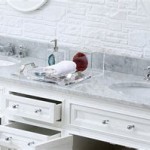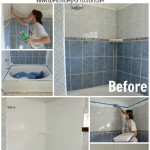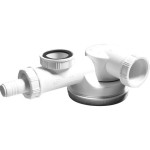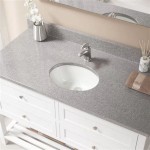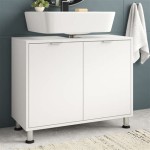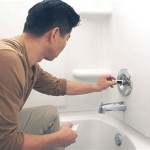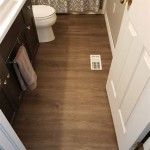Barbie Bathroom Vanity Unit: A Comprehensive Overview
The Barbie bathroom vanity unit represents a specific category of toy designed for children, primarily those interested in playing with Barbie dolls and engaging in imaginative role-playing scenarios. These vanity units, often miniature replicas of real-life bathroom fixtures, serve as accessories within a larger play environment, contributing to the overall realism and immersive quality of the play experience.
The appeal of the Barbie bathroom vanity unit stems from its ability to enhance storytelling and creative expression. Children can simulate everyday activities, such as getting ready in the morning or preparing for a special occasion, using the vanity unit as a focal point. The units typically include various features, such as mirrors, sinks, storage compartments, and sometimes even simulated lighting or sound effects, all designed to mimic the functionality and aesthetic of a real bathroom vanity.
The design and construction of a Barbie bathroom vanity unit are typically dictated by factors such as safety, durability, and play value. Manufacturers employ materials like plastic to ensure the unit is lightweight, easy to clean, and resistant to damage from regular use. The size and scale are carefully considered to be proportionate to Barbie dolls and other related accessories, allowing for seamless integration into existing play setups.
Key Features and Components
Barbie bathroom vanity units are characterized by several key features that contribute to their overall functionality and appeal. These features are often designed to replicate real-world bathroom vanities while remaining safe and suitable for children's play.
One of the most prominent features is the integrated mirror. While often made of plastic or a reflective film for safety reasons, the mirror serves a crucial role in simulating the act of grooming and self-care. The mirror's size and placement are designed to allow children to position their Barbie dolls in front of it and engage in pretend play scenarios involving hair styling, makeup application, and other personal grooming activities.
The presence of a simulated sink and faucet is another defining characteristic. These components are typically molded from plastic and designed to resemble real-life bathroom fixtures. While the sink will not hold water, it provides a visual representation of a functional sink, allowing children to mimic the actions of washing their hands or face. The faucet is often a static element, but some units may include moving parts or simulated water sounds to enhance the realism of the play experience.
Storage compartments are commonly incorporated into the design of a Barbie bathroom vanity unit. These compartments, such as drawers or cabinets, provide a space for storing miniature accessories like hairbrushes, makeup containers, and other smaller items. The inclusion of storage encourages children to organize and manage their play accessories, fostering a sense of responsibility and promoting tidiness. The size and number of storage compartments can vary depending on the specific model and design of the vanity unit.
The use of color and decorative elements plays a significant role in the overall aesthetic of the vanity unit. Manufacturers typically utilize pastel colors, such as pink, purple, and blue, to align with the established Barbie brand image. Decorative elements, such as floral patterns, glitter accents, and molded details, are often incorporated to enhance the visual appeal and create a sense of charm and whimsy. These design choices contribute to the overall playfulness and desirability of the vanity unit.
Moreover, some advanced Barbie bathroom vanity units may include electronic features, such as simulated lighting effects or sound effects. Lighting effects can create a more realistic and immersive play environment, while sound effects, such as running water or hair dryer sounds, can further enhance the sensory experience. These electronic features are typically powered by batteries and are designed to be safe for children to use.
Materials and Construction
The materials used in the construction of a Barbie bathroom vanity unit are carefully selected to ensure safety, durability, and cost-effectiveness. Plastic is the primary material used, due to its versatility, lightweight nature, and ease of manufacturing. Different types of plastic, such as ABS plastic or polypropylene, may be used depending on the specific component and its required properties.
ABS plastic is often used for the main body of the vanity unit due to its impact resistance and rigidity. This ensures that the unit can withstand the rigors of regular play without easily breaking or cracking. Polypropylene, a more flexible plastic, may be used for smaller components or decorative elements that require a degree of pliability.
The manufacturing process typically involves injection molding, a technique where molten plastic is injected into a mold cavity to create a desired shape. This process allows for the mass production of identical components with high precision and consistency. The molded components are then assembled using various fastening methods, such as snap-fit connections or screws.
Safety is a paramount concern during the design and manufacturing process. Manufacturers adhere to strict safety standards and regulations to ensure that the vanity unit is free from harmful chemicals and sharp edges. The plastic materials used are typically non-toxic and compliant with safety standards such as ASTM F963 and EN71. Small parts are carefully designed to prevent choking hazards for young children.
The durability of the vanity unit is also a key consideration. The materials and construction methods are chosen to ensure that the unit can withstand repeated use and handling without easily breaking down. Stress points are reinforced to prevent cracking or breakage, and the overall design is optimized for structural integrity.
Furthermore, the ease of cleaning and maintenance is an important factor. The plastic materials used are typically easy to wipe clean with a damp cloth, allowing children to keep their vanity unit tidy and hygienic. The design is also intended to minimize the accumulation of dust and dirt.
The environmental impact of the materials and construction process is also increasingly being considered. Manufacturers are exploring the use of recycled plastics and sustainable manufacturing practices to reduce their environmental footprint. This includes optimizing the design to minimize material waste and implementing energy-efficient production processes.
Educational and Developmental Benefits
Beyond its entertainment value, the Barbie bathroom vanity unit can offer several educational and developmental benefits for children. These benefits stem from the imaginative play and role-playing activities that the vanity unit facilitates.
The vanity unit encourages creative expression and storytelling. Children can use the vanity unit as a prop to create and enact various scenarios, such as getting ready for a party, styling hair, or applying makeup. This type of imaginative play helps children develop their creativity, problem-solving skills, and narrative abilities. They can experiment with different roles and scenarios, fostering their imagination and self-expression.
The vanity unit also promotes social and emotional development. Children can play with the vanity unit alone or with friends, engaging in collaborative play and social interaction. Playing together allows children to learn how to share, negotiate, and cooperate with others. They can also develop empathy and understanding by role-playing different characters and perspectives.
The act of playing with the vanity unit can also help children develop fine motor skills. Manipulating the small accessories, such as hairbrushes, makeup containers, and other items, requires dexterity and coordination. This helps children refine their hand-eye coordination and fine motor skills, which are essential for tasks such as writing, drawing, and using utensils.
The vanity unit can also contribute to the development of self-care skills. By mimicking the actions of grooming and self-care, children can learn about the importance of hygiene, appearance, and personal well-being. They can develop an understanding of how to take care of themselves and present themselves in a positive manner. This can contribute to their self-esteem and confidence.
Moreover, the vanity unit can facilitate language development. As children play with the vanity unit, they can use descriptive language to describe the objects, actions, and scenarios. This helps them expand their vocabulary and improve their communication skills. They can also learn new words related to grooming, fashion, and beauty.
In addition, the organization and storage aspects of the vanity unit can promote cognitive skills. Children can learn how to organize and categorize the accessories, developing their organizational skills and spatial reasoning. They can also learn how to plan and prioritize tasks, such as deciding which accessories to use for a particular scenario.
Finally, the vanity unit can provide a sense of ownership and responsibility. By caring for their vanity unit and accessories, children can develop a sense of ownership and responsibility. They can learn how to clean and maintain their belongings, fostering a sense of pride and accomplishment.

Barbiecore Bathrooms Interior Expert Shares How To Get The Trend Right Ravish

Washbasin With Cabinet Bathroom Sink For Dolls House Wooden

Barbie Pink Bath Vanity Design Ideas

Pin On Japjeet

Modern Barbie Bathroom Design Ideas Pictures 28 Sqm Homestyler

Barbie Decor Collection Bathroom Mattel 2003 Rare Collectable

7 Barbie Inspired Pink Bathroom Ideas Victoriaplum Com

Untitled Dollhouse Bathroom Barbie Vanity Units

Barbiecore Bathroom How To Create A Worthy Of The Dreamhouse Daily Dream Decor

Inside The Home Of Singapore S Biggest Barbie Collector
Related Posts
